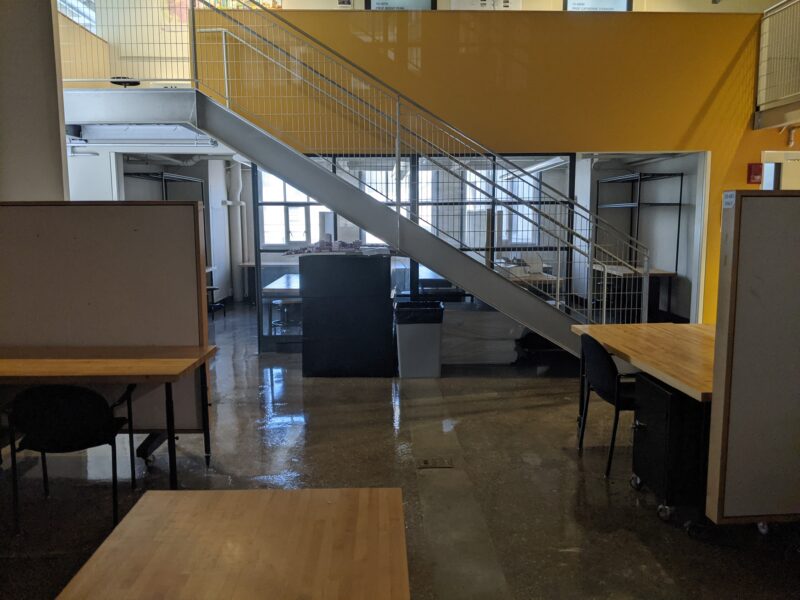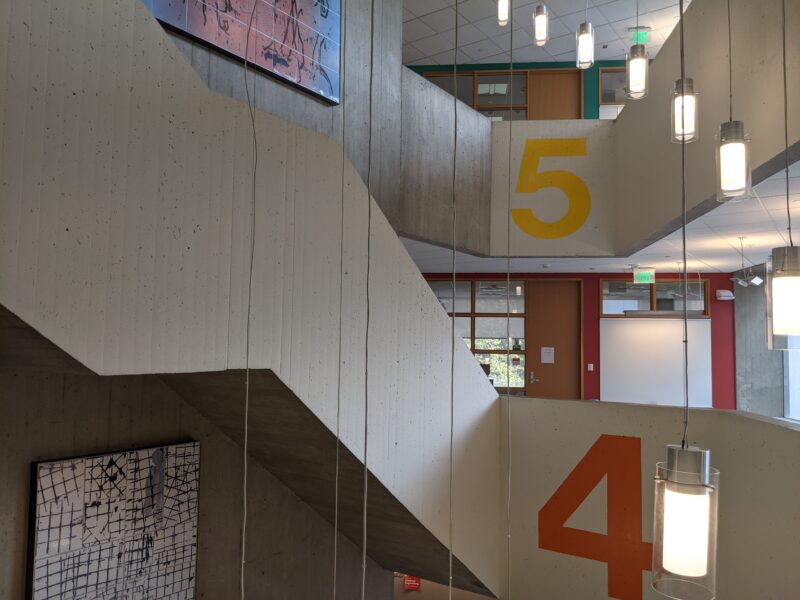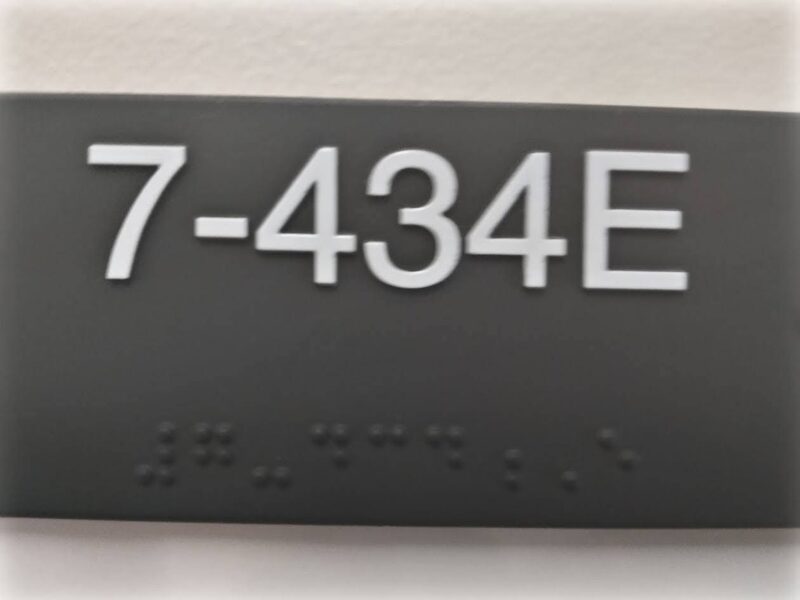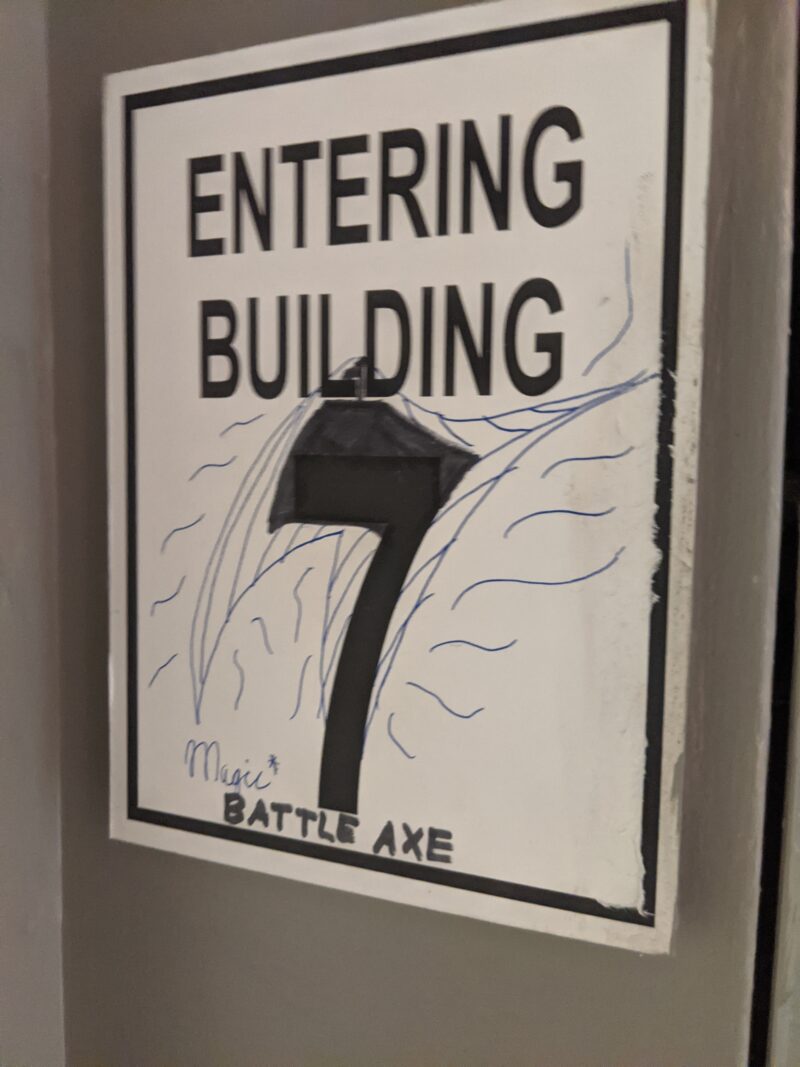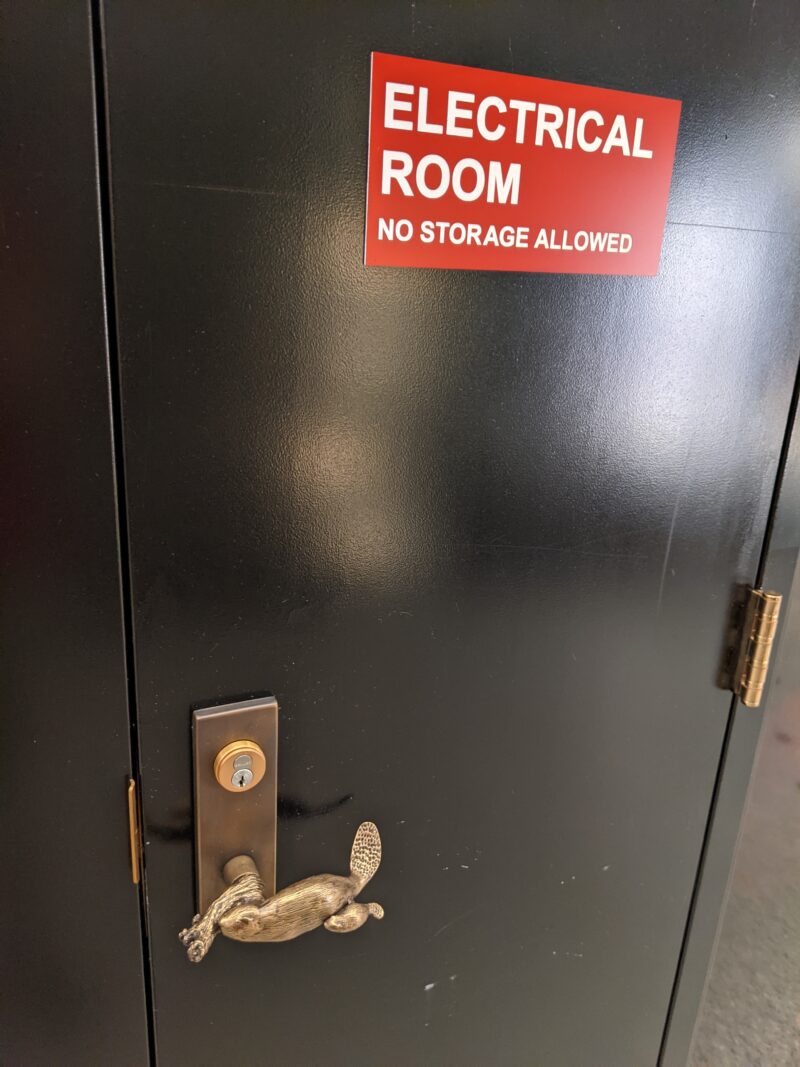
[joint post] the MIT picture scavenger hunt by Alan Z. '23, MEng '24
or, how to drive yourself insane by looking at floorplans
introduction
CJ: Gods, how did this start again?
Alan: Are we really doing another conversational-style joint post?
CJ: There’s literally no other way we know how to write a joint post.
Alan: …ok. So, anyways, what, CJ, is the MIT Picture Scavenger Hunt?
CJ: The MIT Picture Scavenger Hunt is the title of this blog post. The author’s an MIT alum whom I know in real life, who has this really impressive, almost encyclopedic knowledge of MIT’s campus and all its many quirks. Their blog also has a lot of cool MIT-related posts, like this one, or this one, or this one. Have you read all of these? You should read all of these.
Alan: This feels like a leading question.
CJ: The correct response is “I’ll get to reading them eventually.” Anyway, Alan, what is the MIT Picture Scavenger Hunt? I know you asked me the question, but now I’m deflecting it. This is how I deal with my problems.
Alan: The MIT Picture Scavenger Hunt is a collection of 80 images taken from all around MIT’s campus around 2016. All of them are pictures of interesting objects or structures around campus, taken from interesting angles, and the goal for each is to identify where that picture was taken from. These images range from the very, very easy, to the extremely difficult.
CJ: Here’s an example, image 35:

CJ: The post also includes a form to submit guesses, and a leaderboard. I sent Alan the blog post one day. I thought it’d be cool if we tried identifying some of the locations as a sort of summer project.
Alan: And, since I somewhat hubristically felt like I had a very good understanding of MIT’s campus, I thought that this sounded like a very fun project. So I agreed to join the hunt with CJ, and we began our quest by creating a spreadsheet, as is our modus operandi.
CJ: Well, the way it actually began was less “let’s make a spreadsheet”, but more like, “hey, why don’t we go through these first few places we recognize that happen to be nearby”. I still remember when it happened. We were in some random building after eating out or something. You said we should go.
Alan: And so we did. The first twenty or so images in the collection seemed fairly reasonable, and we managed to collect sixteen of them on our first pass. This was a good omen.
CJ: You say “fairly reasonable”, but we didn’t find image 5 until a month later. Look at this image! This just looks so generic. Lots of MIT buildings have floors numbered 1 to 8.

Alan: Despite CJ’s complaining, this first trip really did set our expectations high. Our goal became 60 items, which would put us in first place with a fairly comfortable margin. We were relatively confident that this would be achievable; after all, we know what campus looks like. Collectively, we’ve been exploring it for four years.
CJ: If by exploring you mean “living on campus”, which does not always include exploring.
Alan: Okay, but I, personally, am a big fan of exploring campus.
CJ: Anyway, we’re going to start discussing where and how we found some of these images. We’re going to try not giving away too much, but be warned. Spoilers will start here. If you intend at all to do the scavenger hunt (which you should, it’s fun!) then you should stop reading. Like right now.
the first night
CJ: So, the first night. We were in the east part of campus, so we started with the pictures we knew were in that part of campus. The nearest one was image 2.

Alan: Having walked the tunnels a few too many times, this image was pretty obviously in MIT Medical.
CJ: Yeah, those lights on the floor are pretty recognizable.
Alan: Other early items were similarly obvious—the back of the Alchemist’s head (image 1), or a support column in the basement of Stata (image 3).
CJ: While others were not so obvious. The worst offender that night was the deceptively simple image 4.

Alan: It’s 32-188! We have the room number! We’ve attended this institution for two whole years; surely, we can find a room based on its room number by now!
CJ: Yes, well. The 1 being the first digit after the hyphen meant that it was on the first floor. So that was pretty restrictive. The room numbers around a floor also increase in a certain direction too. Stata had a few gaps in the first floor because of the weird layout. We went around three times, looking for where 188 could possibly be.
Alan: We found a variety of doors that we did not previously know about—a door that connected the café01 CJ: I feel the need to make the ‘wow, café with an acute accent’ joke, as a reference to our previous joint post, but I won’t. with the entrance on the other side of a main staircase, some doors up a half-flight of stairs that connected to the second floor of Stata, so on and so forth. What we did not find was 32-188.
CJ: And then—and then here was our breakthrough! After maybe thirty minutes of fruitless wandering around the first floor of Stata, we went to the bathroom. When we went out, we noticed that the restroom room numbers were 32-190 and 32-192.
Alan: So we moved in the opposite direction, to a large, nondescript wooden door.
CJ: And this was a hella sketchy door. No label. Just large and unmarked.
Alan: It was also unlocked. We opened it and we wandered into the tunnel. It looked like the kind of passageway you would not want to go down in a horror movie. Clean white walls, no natural light, a weird curve that you couldn’t see around, the whole nine yards.
CJ: At the end of the tunnel was a flight of stairs, leading maybe half a floor down. It was dark. There were two doors. To the right—and this was the surprising part—the right door led to an elevator lobby. A space between two huge lecture halls.
Alan: And the left door, well; the left door was the treasure we had been searching for. 32-188! We weren’t so incompetent as to not be able to find a room based on its room number.
CJ: Truly an experience. You told me you came here with Shuli, once?
Alan: I wanted Shuli to experience the same joy of finding this obscure room, so I walked around Stata with them as they looked for it. They noticed the bathroom room numbers and the extra hallway on the fire evacuation maps on the first pass and solved it almost immediately. They are smarter than the two of us combined.
CJ: Truly, our “very good understanding of MIT’s campus”.
Alan: Alas.
CJ: The only other thing I remember from that night was image 42. Notice the peculiar design of this sign: the floor number was circled, and not only was there a basement (usually numbered floor 0), there was a subbasement (numbered floor 00).

Alan: This was kind of an accidental find. We were in Building 18, because we knew image 12 was in the basement there. As we wandered down the stairs, CJ noticed that we were, in fact, in the north stairwell with floors 00–5. Aha!
CJ: The floor number was circled too, so that was confirmation. That meant we needed to go all the way up to the fourth floor.
Alan: By “go all the way up to the fourth floor,” CJ means that we walked down to the south side of the building and took the elevator from the basement to the fourth floor.
CJ: Look, we were doing a lot of walking that day! We get it, you run twenty miles every night. We took the elevator up, walked all the way around, took the picture, walked all the way around again, and took the elevator back down.
Alan: Notably, this “stairwell signage analysis” would become a key component for much of the rest of the scavenger hunt. This is also why every time I walk past a stairwell on campus nowadays, I look at the signage. The differing fonts and labels and shapes haunt me in my sleep.
guesses, both educated and wild
CJ: Moment we got back to MacGregor, because, you know, Alan and I were staying in MacGregor this summer, Alan started enthusiastically filling out the spreadsheet. Never seen him so excited in his life. Second only to when he showed me his app for planning out the whole MBTA path, which turned out to be completely unnecessary because Alan memorized it anyway. 02 Alan: Every sentence in this paragraph makes me deeply unhappy.
Alan: I will note for the record that “the spreadsheet” CJ is referring to was made by him.
CJ: I literally just made the doc and shared it with you. You filled it out.
Alan: The spreadsheet, like the MBTA path spreadsheet, was extremely useful.03 CJ: Thank you, Alan, for exaggerating its usefulness. (Alan: You’re welcome.) It contained a few important columns: the number of the item in the hunt, a verbal description of the image, and a guess at its location.

CJ: I still remember Alan saying, “we’re going to be using this column for the image alt text when we make the inevitable blog post about this, eventually.”
Alan: And I was correct.
CJ: We did whatever research we could without actually going around the buildings. Some bits of some images included certain vital information. One of the things I learned, for example, was that each elevator had a distinct code. Not only that, but you can look these codes up in a public database, and find out which code is registered for which elevator owner. And I was like, wow, maybe that’ll help with IDing the two images with elevator codes!
Alan: Unfortunately, the Institute has an unhealthy habit of giving literally every building on campus the address of “77 Massachusetts Avenue.” This is why we can’t have nice things.
CJ: Our next trip around campus happened four nights later. We’d identified 15ish new places through campus.
Alan: For the most part, this was relatively simple. An early wrench in our plans was presented when image 10 ended up being outdated with the recent wind tunnel renovations. With a little bit of squinting, we figured out the location where the image would have been taken from, a few years ago. The real problem, however, started when we entered the Stata Center.
CJ: Oh gods, Stata Center. We knew several of the places were in Stata, because Stata just had those vibes. But we were pretty confident we could find these locations, because you know, we found 32-188 after all. We had like five items listed for Stata, one of which was image 64, shown below. We spent an hour wandering around Stata, without finding any of the items we listed.

Alan: This was quite disappointing. We went to Chipotle to bolster our spirits.
CJ: Luckily, our next stop after that was Sloan, which was much more successful.
Alan: I, for one, knew essentially nothing about Sloan. However, when you look at an image, and the font has a totally different vibe from every other building on campus, you know it’s in Sloan. Sans serif fonts that look like they belong in Microsoft Word? Absolutely E62.
CJ: Okay, first of all. The only sign with a sans serif font was image 61, which looks like it’s Scala, which is 100% not a Microsoft font. The other sign, image 43, had letters that definitely had serifs, and I would guess that they’re also Scala.

Alan: CJ, words cannot describe how much I do not care about the fact that I am wrong about this specific font. I am talking about the vibes of the signage design. I mean, just look at the sans serif numbers in contrast to the serif text. This speaks volumes about the person who designed this sign. 04 while we were writing this, we argued about this for about ten minutes. we are sparing you from the rest of that discussion here
CJ: Anyway, Sloan was our last stop that night. We’d identified 31 images with certainty by the end of that night.
Alan: On our way back from Sloan, we were walking down the Outfinite, this open space which parallels the Infinite Corridor, when I came up with a couple of guesses for various items, namely images 74 and 75. It turns out that 74 was actually the base of Rotch Library, which had lodged itself in my consciousness a few years ago, and 75 was a fire exit door on the side of Maseeh, which I initially ID’d as potentially Baker because of the brick.

CJ: Image 75 was such a big brain moment. I was shocked and awed with this impressive ID. Truly a very rare display of brilliance from Alan.
Alan: Hmph.
alan spends a month haunting campus
Alan: At this point in the summer, CJ became extremely busy with whatever else he was doing.
CJ: Busy with being a head counselor for PROMYS, which was a job that had very weird hours and left me free at very random times of the day. Also after PROMYS I was still thinking about PROMYS because being a head counselor for PROMYS is such a task that makes you think about PROMYS PROMYS PROMYS I love PROMYS.
Alan: I had a 9-5 job, so I was free to check out mentally at 5 PM everyday and just wander the hallways, looking for things. And wander I did.
CJ: It was during this month that Alan lost his mind meticulously writing down the colors of the walls in each building. Probably the tiles of the floors too. Maybe even the ceiling tiles. I think at this point Alan has memorized the scent of air freshener they use for the odd-numbered buildings in Main Group.

did you KNOW that elevator 11 in STATA has just TWO floors, but we don’t have TAP access?
Alan: Essentially, this was me, but with a lot more spreadsheets and a lot less paper.
CJ: What did you do during your trips? Did you just randomly wander places you weren’t familiar with? Is this how you learned about the horrors of the fourth floor of Building 3?
Alan: This is, in fact, exactly what I did. I searched my brain for “floors of buildings I hadn’t visited before,” and then I visited them. I visited the eighth floor of Building 36, the fifth floor of Building 9, the basement of Building 13, and so on. I ended up finding about an item a day for a week or so. I also ended up finding a lot of other weird places.

(alan: my favorite weird place)
CJ: I feel like your threshold for weird things is lower than mine. Or maybe I’m just jaded enough that things in MIT are just weird by default.
Alan: I just think it is interesting to be in places that you would normally have no reason to go.
CJ: I dunno, I feel like the most interesting thing to me was image 76. This was in the Borderline Tunnel connecting 66 to E15, so I passed by it relatively frequently. But I just didn’t make the connection until Alan pointed it out to me.

Alan: I actually felt a very strong spiritual connection to image 76 and I couldn’t tell why. I felt like I had to know where it was, but I just couldn’t pull my brain for it, which is why it wasn’t that surprising when it eventually showed up somewhere I tend to frequent.
CJ: Speaking of spiritual connections, I remember you telling me about the spirits of Dreyfus and Gates taunting you in the labyrinth that was the Stata Center.
Alan: The thing about Stata is that you can tell which images are in Stata. You just can’t figure out how to get to them. I ended up finding a couple items by accident and also ended up getting completely lost in the middle of Stata on one occasion. That was not fun.
CJ: You should’ve just carried a ball of red thread that you could follow back to find the way out. I feel like the ancient Greeks were better at this than you were.
Alan: The ancient Greeks also didn’t have to contend with unlabeled one-way doors with a penchant for closing on you at exactly the wrong time.
CJ: If you trapped the minotaur in Stata, it’d take at least six months for Facilities to notice. Anyway, Alan spent July just locating a bunch of places, and managed to find 21 of them by the end of the month.
Alan: I think my favorite was Image 49. I kept wondering where around campus an orange, brick building of that shape could be, and one day I was working in one of the tallest buildings on campus when I looked out the window and saw a vaguely orange-yellow, brick building all the way on the other side of Mass Ave. When I got off work, I walked all the way over, and after a bit of repositioning myself ended up finding the location.

CJ: End of July, I finally found a free afternoon. Alan and I went around campus tracking down the places he found. First thing we did when we got on campus was find an empty classroom, draw a map of MIT, mark out all the places we had to visit, and make a path. This is where Alan will point out that I’m very bad at drawing MIT’s campus.
Alan: I drew a triangle for my map of MIT campus. CJ was like, “that’s not what MIT looks like.” But, in fact, that is exactly what MIT campus looks like.

CJ: No, because main campus is a pentagon!
Alan: Notably, however, there were plenty of items on this scavenger hunt which were not on main campus.
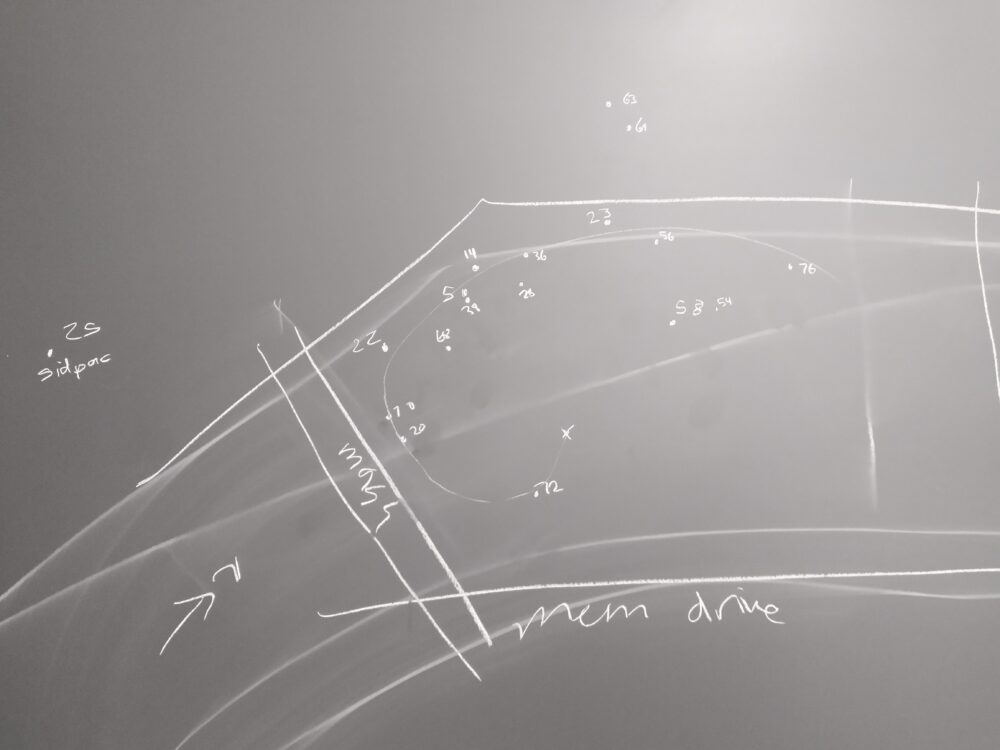
CJ: Yeah, but not any of the ones we looked for that day.
Alan: Anyways, we played connect-the-dots with all the items I’d found over the course of July, and then we just walked around campus, following that path, until we’d taken photographs of each of them.
CJ: What was notable about that afternoon? Maybe image 68? And I think that was only notable because of a sign that was next to where it was located, saying “olaf lives here”. I thought that was adorable.

Alan: On the whole, the actual process of taking the photos was, as the Minnesotans say, “not too bad.”
CJ: Do Minnesotans actually say that? I feel like Minnesota and South Dakota are both in that same, liminal space of not-really-actual-states.
Alan: I think Minneapolis, St. Paul, and the Fort Snelling Unorganized Territory would be very unhappy with you for saying that.
giving up and giving forward
CJ: By the end of July, we’d found 53 of the images. We were now on the top of the leaderboard. Pretty good achievement for a summer project. But Alan would never be satisfied.05 See, Alan, <em>I</em> made the musical reference this post. Where is thine musical geekiness now, huh?
Alan: At this point, however, we’d gotten far enough that I felt willing to complete as many of the remaining items as possible by whatever means necessary.
CJ: So we brought out the unnecessarily powerful tools.
Alan: MIT Facilities provides anyone with MIT credentials access to the floorplans of MIT, as well as a comprehensive list of rooms owned by any given department.
CJ: This was, in fact, not helpful at all.
Alan: Wrong! It turns out that the Department of Facilities “owns” every stairwell and elevator on campus. This means that, with enough passion and dedication, you can enumerate every single elevator and stairwell on MIT’s campus.
CJ: And when it comes to passion and dedication for trivial, inconsequential things, Alan’s is limitless.
Alan: I just think that sheer force of will06 CJ: Haha that’s an MTG card name. (Alan: I hate you so much.) and pure spite are two of the best ways to complete a project.
CJ: It still wasn’t very helpful. I think you only IDed one thing from that? Maybe two?
Alan: Yeah, that’s about right. I ended up finding something much more useful embedded in the names of the pictures on the website, which gave me the order in which the photos had been taken. This, along with a few more lucky stumbles into items from places I hadn’t been, took us all the way from 53 items to 66 items! Success!
CJ: Maybe one day we’ll actually get to taking pictures of those. And maybe another day we’ll bring that number all the way up to 80.
Alan: In any case, the floorplans did provide me with a couple ideas for new projects. In the next two years, I’m hoping to walk every hallway and stairwell at MIT.
CJ: I fail to see why you find this cool rather than tedious.
Alan: Why can’t it be both?
CJ: As for the actually interesting thing to end this blog post on, Alan spent a decent amount of time compiling some new pictures, for a harder scavenger hunt. We’d be really interested to hear if you have guesses for any of these!
Alan: These are somewhat ordered in level of difficulty, but, to be honest, most of them are just extremely hard. Good luck!
- CJ: I feel the need to make the ‘wow, café with an acute accent’ joke, as a reference to our previous joint post, but I won’t. back to text ↑
- Alan: Every sentence in this paragraph makes me deeply unhappy. back to text ↑
- CJ: Thank you, Alan, for exaggerating its usefulness. (Alan: You’re welcome.) back to text ↑
- while we were writing this, we argued about this for about ten minutes. we are sparing you from the rest of that discussion here back to text ↑
- See, Alan, I made the musical reference this post. Where is thine musical geekiness now, huh? back to text ↑
- CJ: Haha that’s an MTG card name. (Alan: I hate you so much.) back to text ↑





